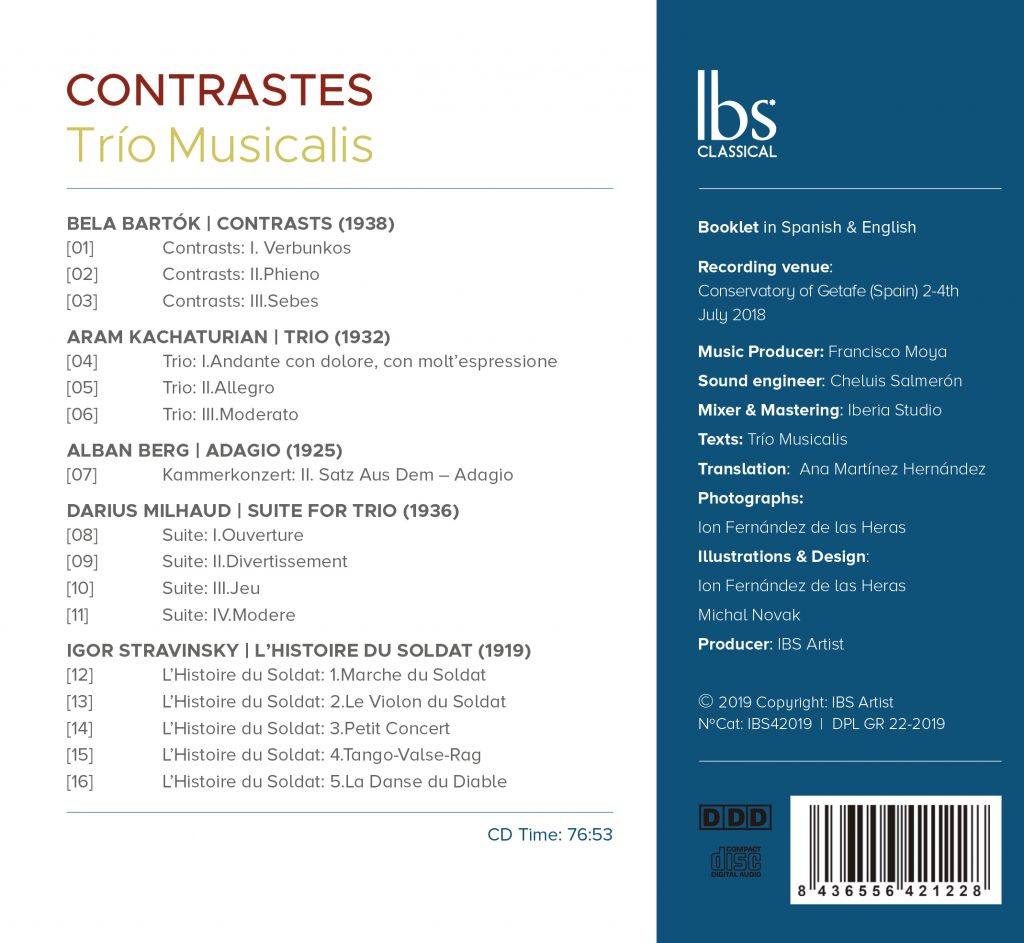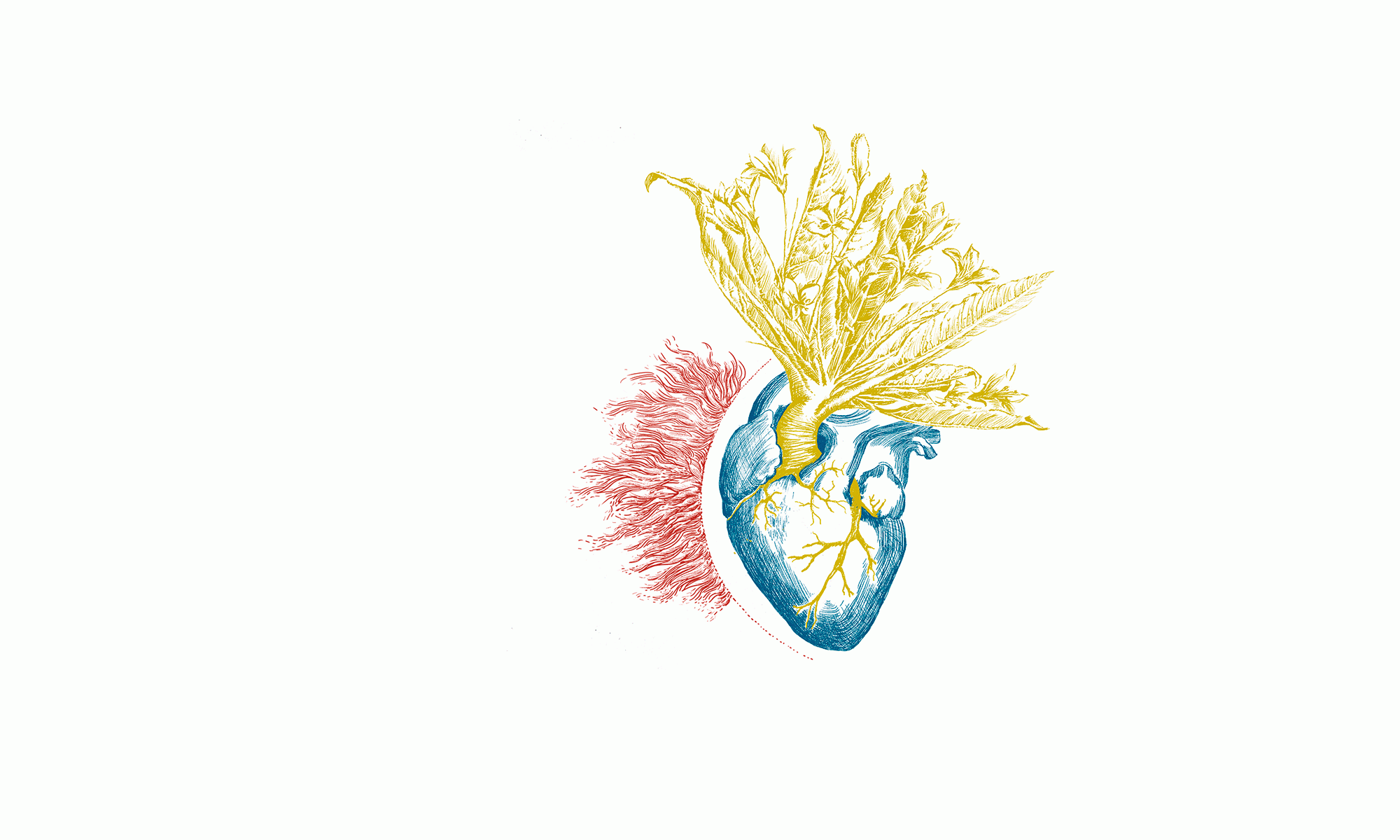Notes to the program:
The pieces contained in this cd are not only the result of ten years work and their own matured performative proposal but also the challenge of approaching the 5 “essential” pieces of the violin, clarinet and piano repertoire. Of course, we could talk of other widely interpreted pieces of great artistic value, but their authorship (5 big names of the 20th century music) give us credit on this selection.
It is also of great interest the fact that, even thou the 5 pieces where composed only 20 years apart (between 1919 and 1938, the inter-war period) they correspond with 5 completely different styles, serving as a wonderful summary of what happened in the history of art during that period.
In the description of these pieces we can find, apart from a brief outline of the story (information we can easily find nowadays), a synthesis of the “challenges”, interests and objectives that have defined the Trio throughout their career as an ensemble. This is because, based on the objectives, the outcome is defined.

The Soldier´s Tale (1919), a translation from the original title in French L´Histoire du soldat, by Igor Stravinsky, is an arrangement of the original suite for three actors and seven musicians based on the text of Ch. F. Ramuz. Clearly a Faustian plot (with many appearances of the devil and the freedom of choice of men) and composed on the self-named “worst stage” of his life, the piece is a protest against war, which musically exemplifies the composer´s style: constant rhythmic changes and the combination of melodies and rhythms.
The musical difficulty lies in the strict conception of rhythm, constantly varying, and a true “translation” from the septet to the trio, even though the septet included percussion or trumpet, timbres far apart from those of the clarinet, violin and piano.
The Adagio (1925) by Alban Berg, is also an arrangement of the second movement of his well-known Chamber Concerto composed in 1935. It presents, for the performer, all the difficulties of dodecaphonic music plus the complexity of the imitation of the wind ensemble (thirteen instruments) on the piano´s and clarinet´s part, with the accompaniment of the violin solo. Also, we should highlight the principal themes that succeed each other in order till the middle of the piece and retrograded till the end, creating a musical palindrome. Making the public realise this is one of the challenges.
The Trío (1932), by Aram Kachaturian, transcends his folkloric roots to create a piece of enormous expressive force, displaying all his compositional resources. He uses, for example, popular Armenian melodies combined with arabesque counterpoints (first movement) or a popular theme from Uzbekistan (third movement) as a theme with 9 variations. Even though it is not the most demanding technical piece, the ensemble has always had a special respect for it because it is complicated to perform, from an occidental and classical education, a version that respects the multicultural characteristics of the folklore used by Kachaturian (Georgia, Armenia, Uzbekistan or Azerbaijan).
The Suite for trio (1936) by Darius Milhaud is a curious counterpoint, for it was in reality conceived as incidental music for a theatre play which was later turned into a movie and gave notoriety to its author: Le voyageur sans bagage, by Jean Anouilh (The Traveller Without Luggage, has had in Spain numerous theatre adaptations and film remakes). It is a series consisting on an overture, interludes and an end, composed for the performance. The premiere of the theatre play, at that time, couldn’t be done with Milhaud’s music (him being a jew) and it was replaced with the music of F. Poulenc.
In this case, the work is destined to know the “history” of the piece and to bestow its apparent simplicity with all the meaning implied within.
Finally, it is in Contrasts (1938), by Bela Bartok, where we find one of the masterpieces of chamber music, and possibly of the trio with violin, piano and clarinet. Destined to be played del J. Szigeti on the violin, B. Bartok on the piano and the inmortal Benny Goodman on the Clarinet, we find contrasts everywhere: military recruitment dances (Verbunkos 1st movement), popular dances (3rd movement), frenetic rhythms with places where tempo disappears (2nd movement) and moments of exacerbated musical technique with sections of highly delicate musical expression.
In these cases it is difficult to recreate something in its original way, taking into account the number of versions, being as it is a pinnacle piece of classical music. That is why, Trío Musicalis has dedicated most of its career as an ensemble and has proposed their own aesthetic view to perform it in all its possible meanings (from the faithful interpretation of the score, passing though the understanding of the idea of the composer, to the subjective and own interpretation of the trio as a compound of individualities that makes the “whole” greater than the sum of its parts). For this reason, they dedicate the name of the record.
